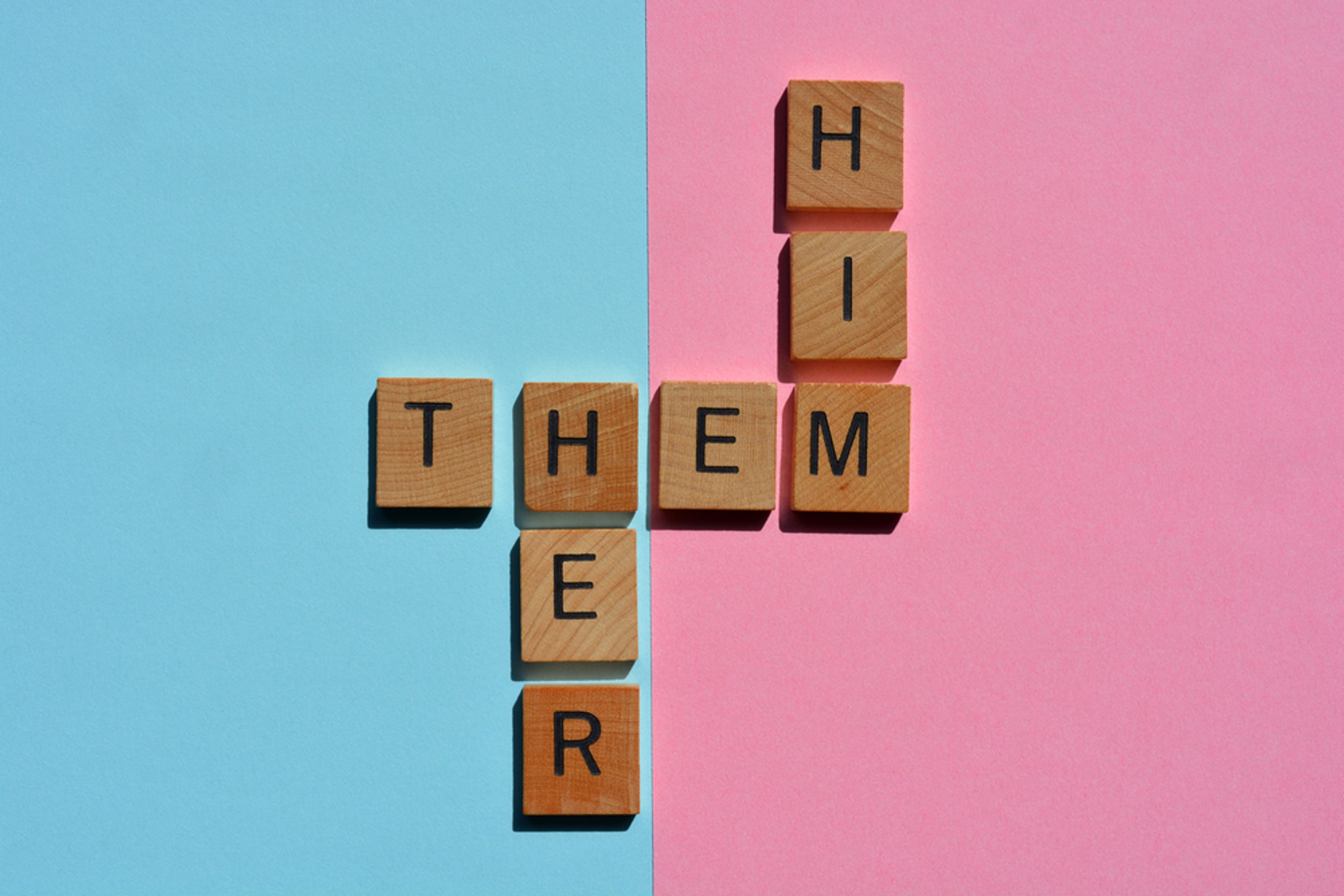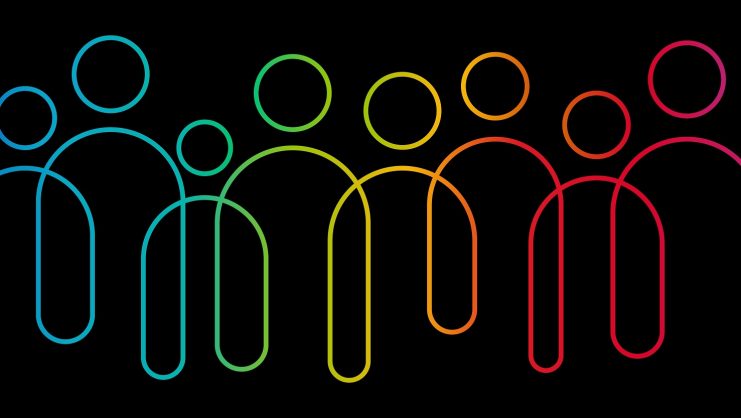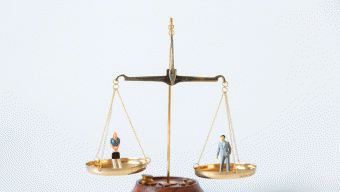I first became aware of the term “non-binary” in 2017 while watching the show Billions. Asia Kate Dillon joined the show in season two, playing Taylor Mason, a brilliant financial analyst who, upon meeting the fund’s boss Bobby Axelrod played by Damien Lewis, says, “Hello, I’m Taylor. My pronouns are they, theirs, and them.” Because Dillon herself identifies as non-binary, they bring not only their immense talent but also authenticity to this first non-binary role on American television.
In their personal life, Dillon embraces opportunities to have meaningful conversations with people who misgender them. While they were “assigned” a female gender at birth, they don’t identify as a female. Nor do they identify as male. It’s part of the widening spectrum of gender expression embraced by some and rejected by others.
For many conservatives, not to mention the former Trump administration, there are just two genders and these are based on the sex assigned at birth: male and female. Experts and many progressives, however, recognize that there is a spectrum of genders, which can greatly differ from the sex that was written down on our birth certificate.
A Google search turns up articles specificizing as many as 83 gender options and an ABC News article claims there are 58 options on Facebook. I checked and only found ten – and to even get to them and the option to select preferred pronouns, you must first enter the gender option in your profile, which allows you to choose between male, female, and custom. After clicking on custom, you get ten options and only once you’ve chosen from those can you specify your preferred pronouns. As more and more cis-gender people opt for neutral pronouns, Facebook will come under pressure to change this.
Overwhelming? Yes. Gender is baked into society: pregnant couples hold gender-reveal parties and, for example, often attempt to make the bald baby head of girls more gender revealing with pierced ears and elastic bows. My mother did the opposite, though not necessarily out of a desire to raise me in a gender-neutral way. Until I was about eight or nine, she would cut my very curly hair in a short “pixie” cut because she thought it was cute and stylish. I hated it because I thought it made me look like a boy.
Gender expression is highly personal, yet as a society we still have a very difficult time letting people out of the two boxes and into something more fluid.
Meanwhile, my childhood friend down the street kept her hair short and insisted that she was a boy. Despite our different views on gender expression, we got on great, faithfully watching Batman every afternoon at her house. Gender expression is highly personal, yet as a society we still have a very difficult time letting people out of the two boxes and into something more fluid.
While more flexible gender expression is nothing new, this latest push for gender-neutral pronouns is gaining traction – Pew Research shows that a growing share of U.S. adults know someone who goes by gender-neutral pronouns, up from 18% in 2018 to 26% in 2021 – it is making some people nervous. And those people are not necessarily the ones you’d expect. Earlier this summer, my best friend told our group of friends, all middle-aged Gen-Xers, about how her daughter’s friends had various gender identifications, name changes, and pronoun preferences and admitted that she was having a hard time keeping up with all of them. So, she told her daughter that she’d just call her friends by their names. After all, that’s what we do, we only use pronouns when we are talking about someone to other people, not directly to them. This frustrated her daughter who felt she needed to show more sensitivity and respect for their choices.
It made me wonder how much this issue represents a generational divide since my group of friends all agreed on the fact that it makes us feel like a bunch of old farts. It should be noted, though, that Generation X comes from the gender-bending 80’s: David Bowie, Annie Lennox, Prince, and Boy George. But, as always, the real story gets told by disaggregating the Pew data, and here age is telling. Forty-six percent of 18–29-year-olds know someone who goes by gender-neutral pronouns, compared to 29% of 30–49-year-olds, 18% of 50–64-year-olds and 11% of those over 65. I suspect that if they polled teenagers under 18, the numbers would be much higher than 46%.
So, I asked my favorite 15-year-old about it, and received some thoughtful insight. She said, “A lot of my friends are non-binary, or use pronouns that aren’t seen as ‘regular’ and it’s hard to get people to respect their pronouns.” In California, schools were completely online last year, and students just returned to school in mid-August and are getting to know each other again. “During Covid, a lot of people realized they were trans or non-binary and it was hard to go back to school because old friends they didn’t keep in touch with weren’t aware and sometimes accidentally misgender or use the wrong name.”
This poses a particular challenge for teachers, which I am of course sensitive to, being one myself. My inside source told me that “some teachers like to have students put their preferred name and pronouns on a piece of paper…and that helps a lot of non-binary or trans students feel a lot more comfortable in class.” It is her opinion that all teachers should do this. While she assured me that “for people who know someone who starts using different pronouns, it’s difficult to remember to call them by the right name or pronouns, but it gets easier the more you refer to them the way they want you to.” She thinks that the best scenario is if we just all switched to gender-neutral pronouns.
While I’m a wiz at learning my students’ names, the prospect of adding pronoun preferences to the mix makes me feel like I will unwittingly upset a student. As a typically politically correct lefty, I have a strong desire to get this sort of thing right. In the United States, this is the path – in many people’s opinion, but particularly those on the left – towards respect and fairness towards everyone’s identification. However, there are still others who consider it political correctness gone mad.
One friend who lists her pronouns (she/her/hers) told me she does so because, “As someone who has ‘accepted’ pronouns it helps normalize seeing pronouns on everyone, not just those who are beyond the binary. It also helps with the idea that we can’t assume pronouns even when someone presents as a particular stereotype.” The New York Times columnist Farhad Manjoo made a similar argument in their 2019 piece titled It’s Time for ‘They’. Manjoo is a cis-gendered man with a wife and kids and now asks people to use they, them, and their when referring to them. “The singular ‘they’ is inclusive and flexible, and it breaks the stifling prison of gender expectations. Let’s all use it.” To be sure, it’s a much easier ask to use pronouns that are already in use than some of the past efforts towards gender neutral pronouns such as “co” in the 1970s or “he’er, his’er, and him’er” that some pushed for around the turn of the last century.
Yet another friend tells me that he thinks “it’s a trend that will backfire. Less progressive folks are just maybe (hopefully) beginning to come to terms with the concept of trans. Now we’re saying that every cis person should explicitly state whether they are male or female for the benefit of a de minimis minority of people who identify as non-binary.” He continued, “It’s fodder for the culture wars.”
To be sure, this is a politically charged issue and the aforementioned Pew poll shows that only 16% of Republicans or Republican-leaning people know a person who goes by gender-neutral pronouns versus 34% of Democrats or those who lean that way. But, it’s one thing to know someone and another to feel comfortable with it. Again, this breaks along party affiliation. Sixty-eight percent of Republican or Republican-leaning people feel uncomfortable using gender-neutral pronouns while 67% of Democrats or those who lean Democratic report that they are comfortable with it. Similarly, 81% of the Republicans or Republican-leaning feel that gender is determined by sex assigned at birth while 63% of Democrats and Democrat-leaning folks feel that gender can be different from sex assigned at birth.
Some feminists note that fluid gender and preferred pronouns present a problem for collecting accurate data for medical research and on gender violence. A standout story from the most recent Olympic Games was about the transgender weightlifter from New Zealand, Laurel Hubbard, who made history as the first transgender athlete to compete in an individual event. While she didn’t reach the final round, she did indeed have the physical advantage of a male body. Again, it can all be rather overwhelming, and more rigorous definitions are likely needed to ensure that research – which has traditionally given short shrift to women – is reliable and that athletes are put on an even playing field.
Language matters and so does respecting people’s wishes. The New York Times took a deep dive into the stories of several young non-binary people and it is well worth a read. Their struggles are real and touching. While the English language doesn’t have one body that governs its correct usage, Spanish does and the Real Academia Española made headlines in mid-August when it answered the question, “How can I refer to a non-binary person?” with a very simple yet respectful answer: “We recommend that you ask that person how they want to be referred to.”
While I very much agree with this sentiment and am happy to do my best to remember people’s gender preferences, I remain skeptical that this might bring about the needed change in terms of respect and fairness when it comes to gender.
Unless I emblazon gender-neutral pronouns on my social media, and perhaps shave my head and start dressing in a more androgenous manner like Taylor Mason, I will still come across as a woman and often get treated with less respect than a man. For example, I was recently invited to a working dinner by a 70-year-old mathematics professor to discuss a possible work project. Yet when I arrived, his brother started calling me “sister-in-law” and spent the evening telling me how I was just as pretty as his brother said I was while pouring more and more wine into my glass. I wasn’t a person, much less a respected political analyst; I was just a pretty thing.
It was a mortifying experience – and I don’t think gender-neutral language would have changed that (though I did try to help this person understand what was so wrong about what happened.) While my explanation fell on deaf ears, these efforts and the conversations must continue towards a place of more respect for all genders, and gender expressions and preferences. Social change is achingly slow but it must go on.
A version of this article ran in Spanish with esglobal.
© IE Insights.








